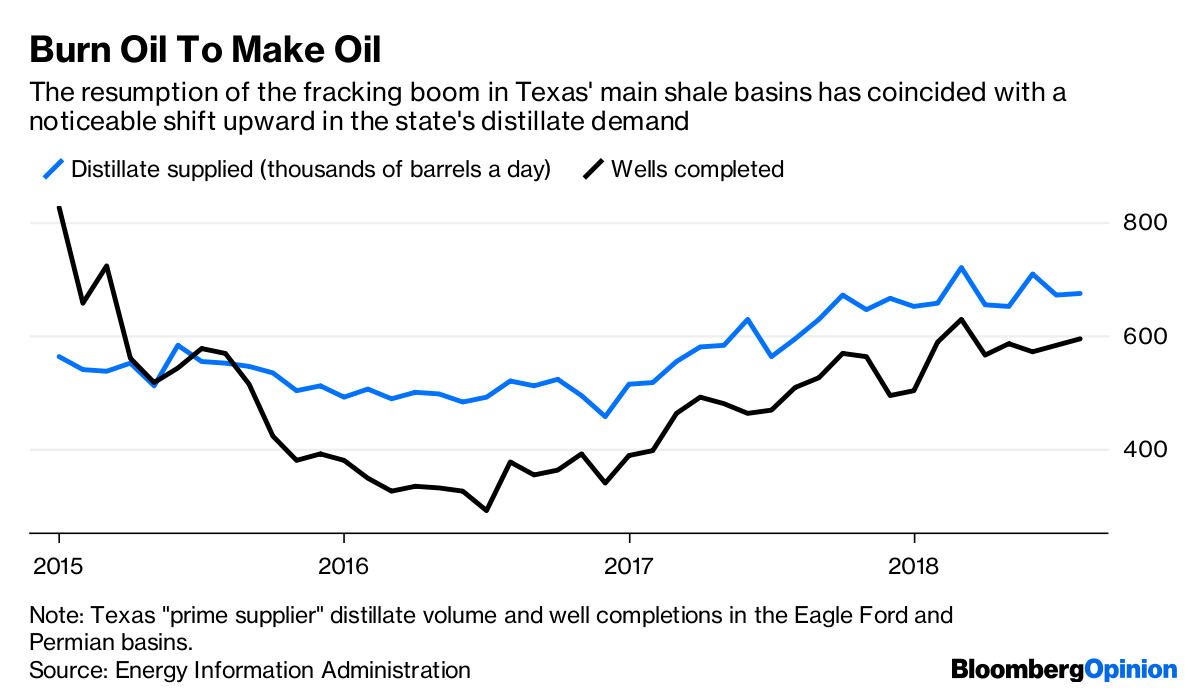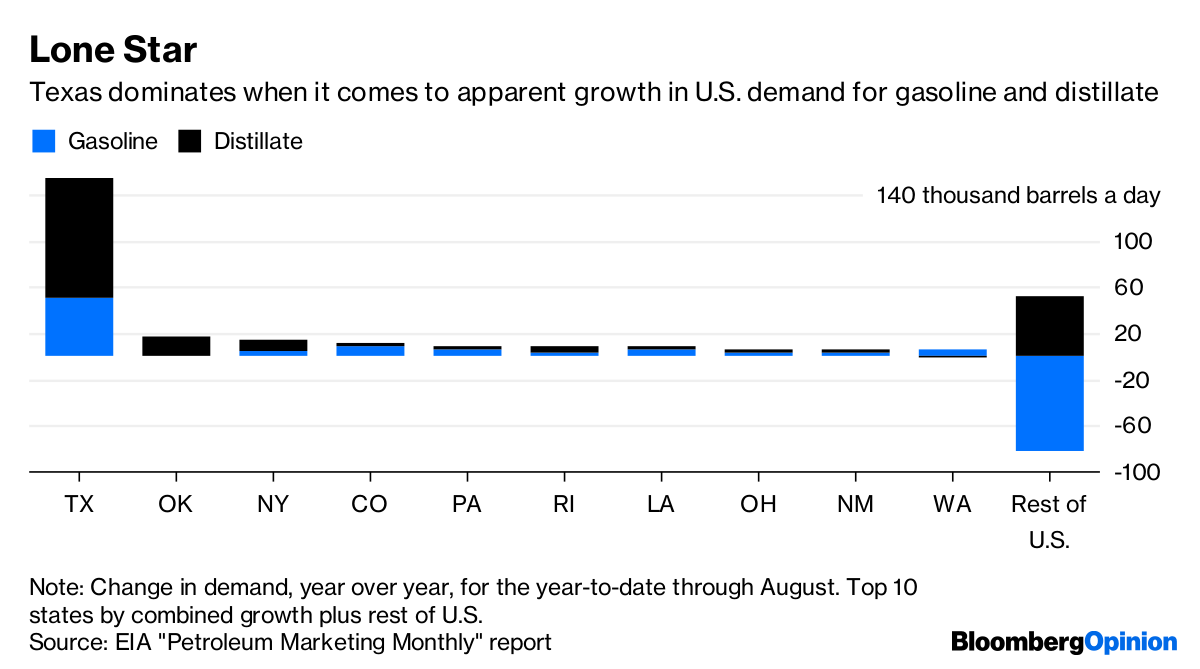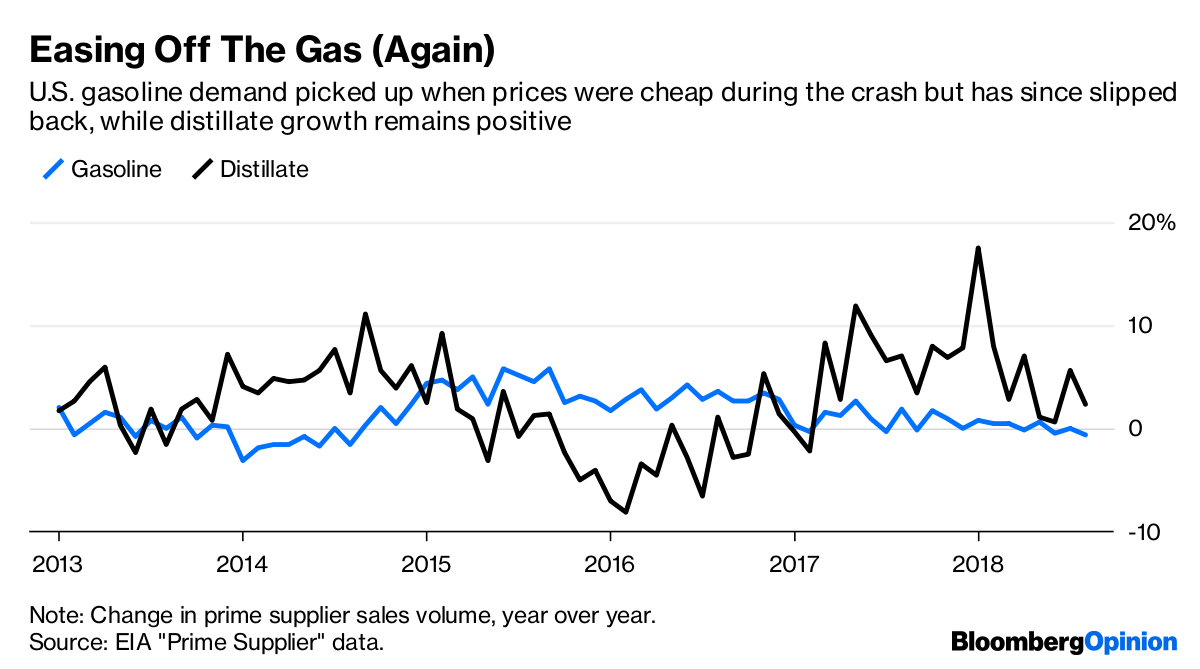
Looking at oil prices, sanctions on Iran haven’t so much kicked in as shuffled onto the stage. Waivers granted to eight countries by the Trump Administration should mitigate the drop in Iranian oil exports to a large degree (and could even herald a near-term increase).
With midterm elections on Tuesday, the White House had good reason to go with hem-and-haw rather than shock-and-awe. Higher oil prices mean pain at the pump and, by extension, possible backlash at the ballot box. This doesn’t necessarily preclude a more-aggressive posture afterward. But oil watchers should take a leaf out of the administration’s playbook and direct some of their attention away from Iran and toward the U.S. itself.
Buried in these numbers is something that should give oil bulls pause. That something is Texas.
America’s gasoline demand is the single largest pool of consumption in the global oil market. And it has stopped growing again, with average pump prices of roughly $2.90 a gallon up about 30 cents over the past year and continuing a recovery from less than $2 in early 2016. Distillate demand, however, which includes diesel and fuel oil, has kept chugging along, albeit at a slower pace of late (all data are through August 2018).
Not because Texas is floundering. Far from it. Rather, when it comes to growth in demand, Texas is pretty much the whole story.
The Energy Information Administration released its latest issue of “Petroleum Marketing Monthly” late last week, with state-level data on fuel sales. Looking at growth in the first eight months of the year versus the same period in 2017, one state stands out just a bit:

Oil demand data can be tricky to pin down exactly. Still, these data are the closest to the nozzle on a state basis that the EIA publishes. Moreover, they chime with data elsewhere.
The EIA’s alternative “Petroleum Supply Monthly” doesn’t provide state-level data on apparent consumption. However, looking at its numbers for the Gulf Coast region – which Texas dominates – that area accounted for 86 percent and 41 percent of growth in U.S. gasoline and distillate demand, respectively, in the year-to-date through August. This fits with the state-level numbers. Meanwhile, Texas also cuts an outsize figure in the Federal Highway Administration’s estimates of how far Americans are driving. Data for August show that Texas accounted for 9 percent of vehicle-miles traveled that month, but 29 percent of the growth, year over year
The Texas economy has been flourishing lately and it was the sixth-fastest-growing U.S. state in the first quarter of 2018, according to the Bureau of Economic Analysis
.
A big factor in that has been the fracking boom in the Eagle Ford and, especially, the Permian shale basins; mining and oil and gas extraction accounted for roughly a third of Texas’ GDP growth. And this may well have had an outsize impact on distillate demand, as diesel engines provide the horsepower for pumping massive quantities of sand and fluids into the ground to frack wells. Certainly, the notable increase in Texas’ distillate consumption coincides with a recovery in well-completions.
Construction may also play an important role here. Gasoline consumption and vehicle-miles traveled have tended to track movements in housing starts over the past several decades, according to energy economist Phil Verleger. And besides fracking, Texas has had a construction boom. Four major metro areas there – Austin, Dallas, Houston and San Antonio – accounted for more than 11 percent of all U.S. single-family housing permits in 2017, according to analysts at Sector & Sovereign Research LLC. The same analysts point out that monthly mortgage payments on a median priced home as a share of median income are now above the historical average in all four of those cities, but especially in Austin and Dallas. This mirrors a general decline in housing affordability in many U.S. cities.

Oil enthusiasts can cheer Texas for leading the unexpected surge in US oil production this year, although this doesn’t do much for prices. Oil bulls, on the other hand, can thank the state for putting some sort of a floor beneath U.S. demand.
Still, it must be unnerving to rely so heavily on just one state – especially as fracking there is expected to slow temporarily due to seasonal and logistical factors, and construction likely won’t escape what looks more and more like a broad cyclical downturn. While Iran may yet jolt the market in 2019, the more important story could be unfolding in America’s oil heartland.
(By Liam Denning)